Table of Contents.
The Blow Up Of
Norrskensflamman, 1940.
Literature: Attentatet mot Norrskensflamman. Author: Ulf Oldberg.
Publisher: Bonniers, 1972.
The blow up of the Communist newspaper Norrskensflamman is considered to
be the worst act of terror that ever has taken place in Sweden.
The reason why I'm exposing it is to point to the political Vendetta
that followed in the wake of the crime.
Mr.
Oldberg has conducted numerous interviews with people who were direct
witnesses to the attack or otherwise affected. In order to grasp the
political temperature before and after the attack, he has gone through
an extensive newspaper material. Many well known chroniclers are
referenced. His main objective has been to explain how the crime
could happen. The book thus becomes a showdown with the Fascism.
To check Oldberg's information I've taken part of the extensive
preliminary investigation against the perpetrators. It's public and
available at Krigsarkivet, Arninge, Stockholm. I
believe that the testimonies from those who were in the vicinity of the
crime scene by the detonation has high credibility. As a separate part
in the investigation are the perpetrators testimonies. This part has been
proven to be a fake report created by the Swedish Police. I conclude
that Oldberg's book has high credibility.
Background
In September 1939 the German Nazis invaded Poland. This was followed
shortly thereafter by declarations of war against France and England.
The prologue to The Second World War had been presented.
The Soviet Union had earlier in 1939 noticed the German sabre-rattling.
In August a non-aggression pact with Germany was signed (The
Molotov-Ribbentrop Pact). The Soviet leaders, with Josef Stalin at the
head, had realized that it was time to prepare for war. When looking
westward they found that Finland could very well be a battle zone at a
German invasion attempt.
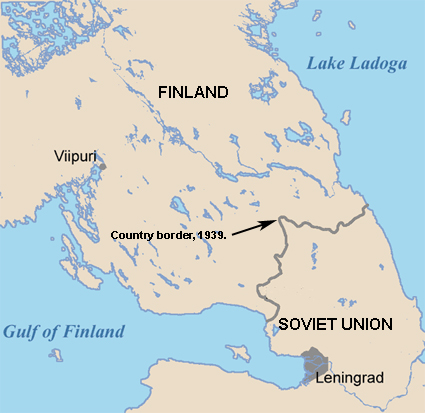
The Karelian Isthmus, 1939.
It was found that Leningrad would be one of the
cities that were in danger. The land area, The Karelian Isthmus, between Lake
Ladoga and the Gulf of Finland belonged to Finland and bordered to the
Soviet Union. The area would be strategically important for the defence
of Leningrad. In October 1939 Stalin demanded that Finland would move
its border westwards at this section. He also demanded to make lease
of the isle Hangö which was strategically important for the control of
the inlet to the Gulf of Finland. Additional cede demands were on the
list. The Finnish Government made concessions, but Stalin announced that
they were insufficient. Finland noticed Russian troop concentrations on
the Karelian Isthmus. On November the 30th, the Soviet Union started its
attack. The Finnish Winter War had begun.
The Papers
The Communist newspaper Norrskensflamman in Luleå had throughout the
autumn of 1939 monitored the developments in the Finnish-Russian
relations. When the Soviet Union attacked Finland the newspaper ended up
in a dilemma. Its view was that Sweden would not enter the Finnish side
in the war. They wanted neutrality to apply. This was also the Swedish
government's stance. Among opponents to Norrskensflamman were the local
competitor Norrbottens-Kuriren, Luleå. The newspaper had a focus to the
right of the political spectrum (is still today). It also served as
housing means to the officers who served in the nearby garrison town,
Boden. Many of these had the perception that Sweden
would enter the Finnish side in the ongoing war. The slogan was:
Finland's cause is ours. Major General Archibald Douglas was
chief of staff to the forces in Norrbotten at that time. Approximately
100 000 soldiers were mobilized in Norrbotten.
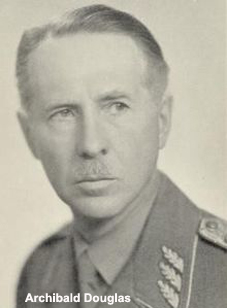
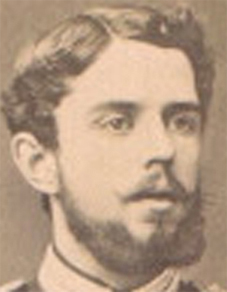
Archibald Douglas
King Gustaf V
(1883 - 1960)
(1858 - 1950)
The Officers
There was a strong desire among the Swedish officers to help their
Finnish brothers in the struggle against the "satanic Communism". As the
government repeatedly rejected the officers' proposals, there was no
other way for them but to go to war voluntarily. Initiatives were
withtaken to
start the so-called voluntary agencies around the country. There
would the recruitment to the Finnish front be organized. Patriotism was
the guiding principle to the organization. The officers were angered to
see that Norrskensflamman worked against the voluntary agencies'
efforts. Norrskensflamman claimed that the activities were illegal. They
stamped the volunteer organizers as warmongers. There was also a risk
that Sweden would no longer be perceived as neutral if the business was
continued. The officers felt that the journalists at Norrskensflamman
appeared as traitors.
Voluntary Corps
The Swedish Volunteer Corps in Finland is estimated to have amounted to
about 8000 men. The Swedish enthusiasm for the war was moderate. One
important reason is deemed to be the Fascist tendencies that were
present within the Finnish society in the 30's. The extreme
Lappo-movement in Österbotten had received attention in Swedish
media because of its
repeated acts of violence. Operating goal was to eradicate the Communism
in Finland.
Most Swedes who joined the war were placed in the rear lines. Mostly
their task was to maintain the troops who were in the front line. The
Swedish losses during the war has been estimated to 33 men. Finland
could count in about 23 000 killed and the Soviet Union about 130 000.
The Six-men Committee
In January-February 1940, a Six-men Committee was formed in Luleå. The
stated aim was to fight the Communists. They had a special focus on
Norrskensflamman in this ambition. Committee meetings were held at the
so-called Piano Room at Stadshotellet, Luleå. The people who were
members
of the Committee were:
Hedenström,
journalist at Norrbottens-Kuriren, Luleå.
Ebbe Hallberg,
Police Chief, Luleå. Member of the city's Masonic Lodge. Nazi.
Elof Rydberg,
Principal railroad bookkeeper, Luleå.
Arvid Johansson, Norrbottens-Kuriren's local editor in
Gällivare.
Ragnar Holmberg, Norrländska Socialdemokraten, local
manager for the Luleå editorial.
Vilhem Lindgren, editor of Norrbottens-Kuriren
(Hedenström's boss)
Outside the Committee were a number of important people. Colonel Svanbom
at Ing 3, Boden, was a such. The committee was led by Ebbe Hallberg. In
the first place the discussions came to focus on which legal action
could be taken to stop the publication of Norrskensflamman. Some
examples:
Contact would be taken with the company that supplied newsprint to
Norrskensflamman. They would be persuaded to stop the deliveries. This
attempt failed. Norrskensflamman had a contract with the supplier. It
was judged that a stop could lead to claims for damages from the
paper.
A political prison camp had been built up at Storsien, Norrbotten. The
idea was to imprison subversive elements (read: Communists) that
couldn't be drafted for military service, would be placed there. There
were similar camps at other locations in Sweden. There was absolutely no
legal basis for these camps. The Social Democrat Prime Minister Per
Albin Hansson must be assigned a heavy responsibility for the advent of
these concentration camps. Storsien had space for about 300
prisoners. The Committee pointed out which Communists they wanted
detained. Lists were handed over to Colonel Svanbom. One of the persons
who was detained in this way was the ad manager at Norrskensflamman,
Valdemar Granberg. There was hope to strangle the flow of advertising
revenue to Norrskensflamman in this way. In the meanwhile advertisers
were threatened to abandon advertising in Norrskensflamman. Granberg's
wife, their 12-year-old son and 8-year-old daughter had their residence
in the newspaper's property. They died in the blast on the 3rd of March,1940.
Granberg had been replaced by another person during his internment,
therefore the Committee's action was ineffective. Sixten, who was
considered for detention, has said that the detention camps had been
erected on the German initiative. At the supposed German invasion it
would then be a simple matter to the Nazis to "take care of" the leading
Swedish Communists who sat in the camps.
According to Swedish law military could requisition the property of
another, without compensating the owner, if the property could not be
obtained otherwise. Another condition was that the property was
essential to national defence. The Committee decided to submit a
proposal on the requisition of Norrskensflamman. The idea was that the
newspaper's print works would be used for the production of a front
journal for the Swedish forces in Finland. Via General Douglas the
proposal was forwarded to the government. There it was considered that a
requisition of the print works was inappropriate. Moreover it had emerged
that there was already a front newspaper in production. It was called
"The Vanguard" and edited by Norrbottens-Kuriren.
The Winter War
In the beginning the Finnish troops had great success. They were inferior in
both numerical and material but still managed to delay the advance of
the Russian troops. They had wiped out entire Russian divisions.
Thousands of Russian soldiers were killed in isolated clashes.
Norrbotten-Kuriren's war correspondents were lyrical in its depiction of
the Finnish heroism. The reason for the success was explained by the
Finnish troops' training for winter warfare. It was known that the
Finnish soldiers were simply superior to the Russian under such
conditions. The winter of 1939-40 was one of the coldest ever been in
Finland. Periodically the temperature was around -40 °C.
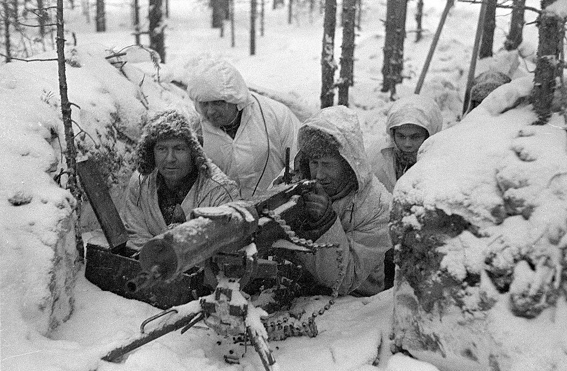
Finnish soldiers at a maschine gun of the type M-32.
When the war continued in February 1940, the Finnish success ended. On the
11th and 12th of February the Russian troops broke through the defence
lines at the Karelian Isthmus. General Mannerheim ordered a retreat. The
situation was critical. The Finnish government appealed for help from
Sweden, but as previously the Swedish government was cold-livered
to an intervention. France and England didn't send troops but they sent
military equipment. Desperation began to spread among the Swedish
officers. It was now known that it was only a matter of time before the
Russian troops would stand at the Swedish border. The voluntary
agencies' recruitment was inert. Norrskensflamman continued to undermine
the war activists' activities. It was now thought that there were
tendencies to war psychosis among some activists.
Attacks Plans
(Note: The statements in the yellow sections are based on interviews
with the perpetrators. I comment the statements below under the heading
"My Comments To The Above")
The Six-men Committee had exhausted its entire arsenal of possible legal
action to stop Norrskensflamman. What now remained was illegal. The idea
of blowing up Norrskensflamman's print work had existed for a long time.
Hedenström was the one who was the driving force into this matter. He
had previously been acquainted with a journalist who worked at
Norrskensflamman. He had visited the premises at Kungsgatan 27 many
times. He therefore had good local knowledge. Police Chief Hallberg had
ordered a razzia at Norrskensflamman on February the 10th. The Police
then spent a whole day at the premises. The apartments inhabited by
Norrskensflamman's staff were also examined. In connection with this
raid Hallberg managed to get hold to a key to the print work's room.
Hedenström was now in possession of the key. It was now his task to
organize the blow up of Norrskensflamman's print work.
The Winter War – The End
The Finnish Winter War came to an end. The Finnish collapse at the
Karelian Isthmus meant that the war in practice was over. On the 29th
of February, the Finnish government said yes to peace negotiations with
the Soviet Union. The war was still extended one week because France and
England had declared their willingness to assist Finland with troops.
These were never sent because the Soviet Union made it clear that it
didn't intend to occupy Finland. On March the 7th the Finnish delegation
arrived to Moscow for negotiations.
The Perpetrators
Hedenström had organized the squad that would carry out the attack. The
following persons would participate:
Hedenström.
Borgström, Second Lieutenant at Ing 3, Boden. Trained
in blasting technology. Squad leader.
Krendel, Second Lieutenant at Ing 3, Boden. Trained in
blasting technology.
Norström, Second Lieutenant at Ing 3, Boden. Trained in
blasting technology.
Palmqvist, shop assistant in the civil but now
conscript dispatch rider.
The Blow Up
(Note: The statements in the yellow sections are based on interviews
with the perpetrators. I comment the statements below under the heading
"My Comments To The Above")
The planning had been done in Colonel Svanbom's residence in Boden. It
was decided that the blow up would take place the night of March the
3rd. Calculated time was at 3:00 am. The whole squad gathered at Colonel
Svanbom's residence in the afternoon of March the 2nd for a final
briefing. Then they went by car to Luleå. It entailed the necessary
materiel for the blast. When they arrived to Luleå they went in to
Stadshotellet. During the afternoon Hedenström had announced the time of
the attack to Police Chief Hallberg. They danced, ate and drank well at
the hotel. They resided there until about one o'clock at night.
Then
they drove to Norrbotten-Kuriren's premises. Standing at the newspaper's
printing press it was decided how the workload should be shared between
the squad members once they had entered Norrskensflamman's printing
press. Bucking the trinitrotoluene rods, drawing of detonating cord,
etc. were determined. Around 2:40 a.m. they drove to
Norrskensflamman. They parked at a back street of Kungsgatan not far
away from Norrskensflamman. Hedenström and Colonel Svanbom had earlier,
on the night of February the 29th, visited Norrskensflamman. Svanbom waited
outside while Hedenström went in to check that the key he received from
the Police Chief fitted to the printer room's front door. When
Hedenström now again found himselves at the door he unlocked. The Second
Lieutenants immediately started bucking of the charges. Palmqvist, who
was shapely, was placed at the entrance vestibule.
They had provided him
with a rubber mallet taken from Norrbotten-Kuriren's printing room.
Other squad members were armed with pistols.
The bucking technique was:
The trinitrotoluene rods were placed on the rotary press in a way that
maximum damage would occur. The rods were attached to detonators
(= a small explosive device). Its task was to get the rods to detonate.
The trinitrotoluene rods must detonate simultaneously. Failure to do so
means a risk of a charge to damage another nearby. That charge will than
never detonate. The problem was solved with the help of detonating cord.
This cord is actually a small explosive charge. The whole length
of the cord detonates instantaneously. The cords are connected to the
detonators that are attached to the rods. The last step consists in
connecting a gunpowder fuse to a detonator. This detonator is than
attached to the detonation cord. When the detonator detonates against
the detonation cord the entire charge will detonate instantaneously. At
the attack the gunpowder fuse had a burning time of about 6 minutes. To
be absolutely sure to get the detonation they had attached two separate
detonators to the detonation cord, each one with a gunpowder fuse. One
of these gunpowder fuse wires were found at Norrskensflammans ruins by
experts from the National Forensic Institute, Stockholm. The fuse wire
was of a special German brand. After some time the investigators had
found the merchant in Luleå who had sold the wire. It was discovered
that the Second Lieutenant, Borgström, was the one who had requisitioned
the fuse wire. The merchant had a copy of Borgström's requisition which
amply revealed that it was he who had ordered and it was a gunpowder fuse wire (30
meters). Thus he was tied to the crime and others involved found it best
to confess.
When the bucking work was completed they ignited the two gunpowder fuse
wires. It was now about 3:10 a.m. The squad left the building.
They started the journey to Boden without in any way await the
detonation at distance. Police Chief Hallberg had instructed the squad
to choose a detour back to Boden. That road made a turn to the south
side of the Luleå River. The reason was that he felt obliged to order
police checkpoints at certain positions immediately after the blast.
However, he would not order any checkpoints south of the river.
The detonation occurred around 3:15 a.m.. The effect was terrible. It had
been heard for kilometres away. People living in apartments near
Norrskensflamman was awakened directly. Some witnesses have said that
they stood at their windows within a couple of seconds. They could then
see how Norrskensflamman was completely in flames. The witness Disa
Rouna has said that she came out on the street within a couple of
minutes to see what had happened. She then felt a distinct odour of
gasoline. A proof for the strength of the pressure wave was the
broken glass that was found about 20 meters from the building.
Ten people were in the building that night. It consisted of a basement, ground
floor, first floor and at the top a attic. The rotary press was located
in the basement. There the explosives had been placed. The blast had
destroyed large parts of the floor between the ground floor and the
basement. At the ground floor the newspaper's editorial office was
located. No one dwelt there at the detonation. The five who lived at the
first floor were killed almost instantly. The autopsy of their bodies
revealed soot in their lungs. This indicated that they had died due to the
fire itself - not the blast. This fact was of importance when the
crime's penal aspects were discussed. The law was crystal clear
regarding arson. If someone is killed due arson the one guilty
shall be sentenced to life time. It was further noticed that the bodies
had not been exposed to external violence.
The fatalities at the first floor were:
Arthur Hellberg, 37 years old, Party District
Ombudsman, member of the Communist Central Committee and the newspaper's
chief
financial officer.
Alice Hellberg, 30 years old, wife of Arthur.
May Hellberg, 8 years old,
spouses Hellberg's daughter.
Svea Granberg, 34 years old, Youth District Cashier,
worked temporary as a corrector at the newspaper. She lived there since
her husband, Valdemar Granberg, was detained at Storsien. Otherwise they
had an apartment in another location of Luleå.
Torgny Granberg, 12 years old, spouses
Granberg's son.
In the attic were the five rescued:
Filip Forsberg, a journalist. He had joined from
Stockholm to Norrskensflamman on February the 21th.
Ellen Olivia Åström and her two sons,
Sven Olof,
14, and
Karl Gunnar, 17 years old.
Erik Inge Ambjörn Hell,
bakery worker.
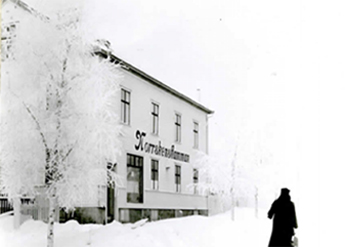
"Flamman" - facade towards Kungsgatan.
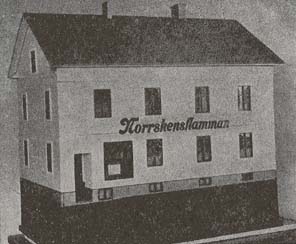
Model of Norrskensflamman's property developed by the Forensic
Institution.
The basement: The black part at the bottom is the part that's
located below the ground surface.
At the ground floor were the editorial offices and the slow
press room. No one dwelt
there by the explosion.
They at the first floor were the fatally injured.
They at the attic were rescued. At the top to the left end there is a
tiny window. It became the rescue.
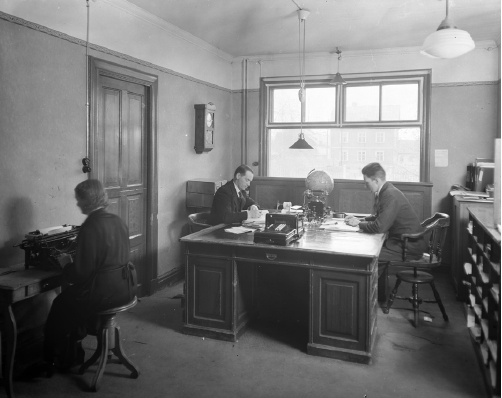
"Flamman" - office space at
the ground floor.
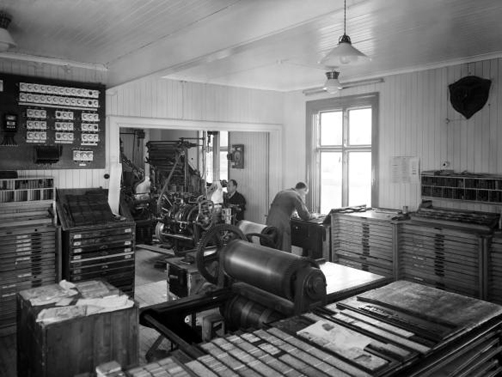
"Flamman" – the slow press room at the ground floor. Here were
simple publications printed, such as brochures, flyers etc. The
rotary press, where the newspaper was printed, was located in the
basement.
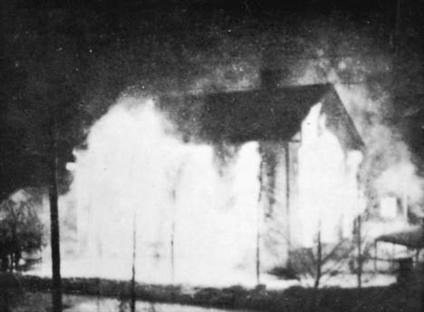
Norrskensflamman. Fully developed fire.
The photo has been shot about 5 minutes after the explosion.
The photographer was a tenant in a property opposite to
Norrskensflamman at Kungsgatan.
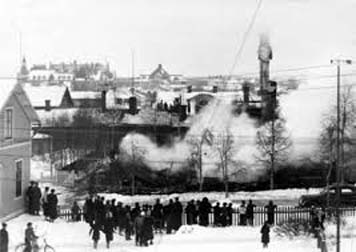
Norrskensflamman. Only the chimney remains.
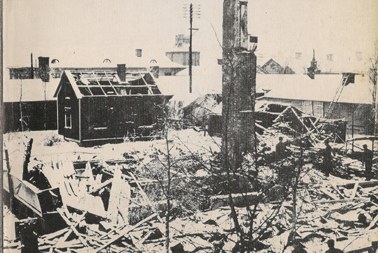
Norrskensflamman. The chimney.
Rescue and death
They were awakened by the violent detonation. Paintings and mirrors fell
down from the walls. Forsberg has stated that he heard a short scream
from Alice Hellberg at the floor below. Then there was silence. They
opened the door that led to the stairs down to the first floor. Fire and
smoke struck up which made that way impassable. Then they rushed over to
the north side where a fire ladder was mounted on the building's facade.
Also this way was blocked. Fire struck up through the window openings at
the floors below. It was absolutely impossible to climb down through
this sea of fire. Then they rushed over to the southern end. There was
a tiny window. It was placed in between the window openings that were in the
floors below. Here was the chance for rescue. The fire was thrown
vertically out from the two windows at the ground floor but the two
flames approached each other all the time. The fire department had been
alerted by residents about 3:17 a.m. It was now at place - with
commendable quickness. A ladder was raised to rescue the distressed in
the attic. The ladder caught fire quickly. This attempt had to be
stopped. A new ladder was erected, but the elevator rope in it burned
off. The chances for rescue from the outside was gone. Those trapped now
tied together sheets that functioned as a lifeline. Hell, Åström and her
sons managed to get out. When it was Forsberg's turn the two flames at the
ground floor had merged. When he approached the flames a sheet caught
fire and burned off. Forsberg tumbled the last meters but was unharmed.
However, he got burns on his hands and face.
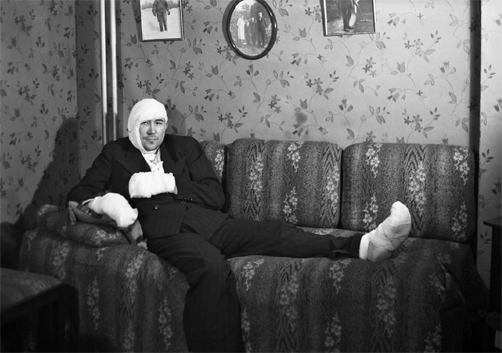
A burned Filip Forsberg rests.
The investigation
The news of the blow up of Norrskensflamman struck like a bombshell in
the political Sweden. The case was given the highest priority. Already
on March the 3rd were experts from the National Forensic Institute,
Stockholm, present at the crime scene. Prominent figure in the
delegation was Mr. Harry Söderman.
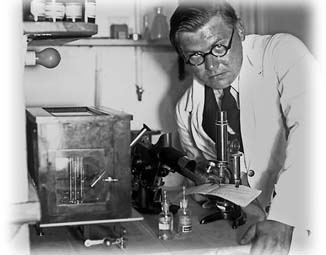
Harry Söderman, SKA
The fire had not yet cooled down, which meant that no investigations
were made on this day. The investigation began Monday the 4th of March. Very
soon it was clear that high levels of magnesium was found in certain
spots of the fire. Magnesium is present naturally in wood but not in the
high level that was observed here. This indicated that the fire was
arson. After some time they found the German-made gunpowder fuse wire
(which I mentioned under the header “The Blow Up”). They also found a
piece from a detonator.
During the trial at the District Court, Luleå, Söderman was a witness.
His testimony gossiped that he had gotten instructions not to say more
than necessary. He believed that at least two fire bombs had been
deployed. He couldn't specify any closer regarding the bomb's
construction but he thought it was likely that magnesium had been mixed
up with some kind of flammable liquid.
The revelation
On April the 14th, the Ministry of Social Affairs announced that the fire in
Luleå the 3rd of March was arson. At the same time it pledged a reward of SEK
10 000 to anyone who could provide such information that the
perpetrators could be arrested. On April the 16th Borgström was arrested.
After a few days the whole squad had been arrested. On April the 19th Colonel
Svanbom and Police Chief Hallberg were also arrested. All came to be
requested by the prosecutor to remand in custody. The indignation was palpable in all
major newspapers. Chroniclers competed in clever analyses about how the
"foolish act of terrorism" could happen. Already now it was
speculated about the penalties that might be awarded to those involved.
No one came to claim the reward, SEK 10 000.
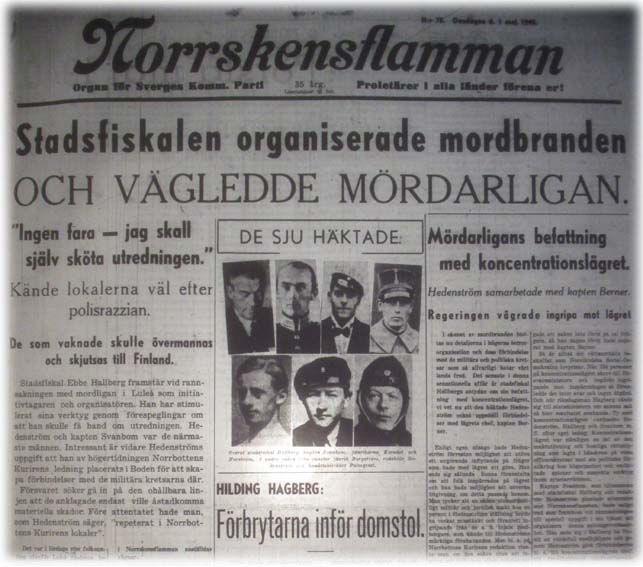
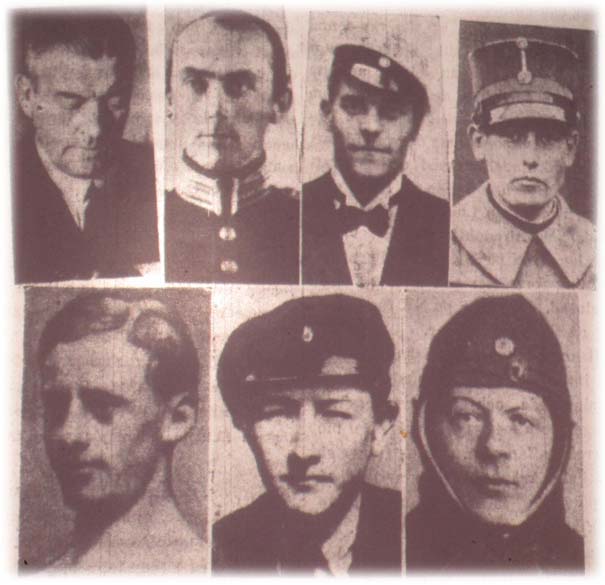
Top row from the left: Hallberg, Svanbom, Krendel, Norström.
Bottom row from the left: Borgström, Hedenström, Palmqvist
The trials
The trials began on April the
27th at the District
Court, Luleå. As representative for Tryckeri AB Norrskenet appeared MP
Hilding Hagberg (the Communist Party)
and Filip Forsberg. Tryckeri AB Norrskenet was the owner of the now
burned down property at Kungsgatan 27. The company was the plaintiff and made
a claim for damages amounting to SEK 300 000.
To the perpetrators the legal situation was worrisome. If convicted of
arson they could be sentenced to life time. The autopsy
of the deceased had shown that the cause of death was the fire itself.
The lawyers tactic was now trying to prove that the defendants did not
intend to cause a fire. The fire was an accident. The aim was merely to
destroy the rotary press. The lawyers claimed liability for damage to
property of another. In that case they calculated approximately 2 years'
imprisonment as a penalty and damages to Tryckeri AB Norrskenet for the
destroyed rotary press. Damages for the burnt down building was out of
the question because it wasn't proven that the defendants had caused
the fire.
The court wanted to determine whether the trinitrotoluene rods
that were attached to the rotary press could have caused
the fire. Therefore it heard a number of experts. These found it
unlikely that
the trinitrotoluene rods had caused the fire. The experts from
the Forensic Institution had determined that at least two fire bombs
detonated in the building. Therefore it was the issue of arson. As the
Second Lieutenants strenuously denied having placed the fire bombs nor
was proven of actually having done so, the case came to a dead end.
During the ongoing trial the defence suggested a theory about the
deployed fire bombs. They argued that a parallel attack had been
performed. Fire bombs would then have been deployed by the offender
after the Second Lieutenants had ignited the gunpowder fuse and left
the building. Estimated burning time of the gunpowder fuse, about 6
minutes, had been based on the findings made at the crime scene. The
defence claimed it would have been quite possible for an offender who
waited behind a corner of the building to deploy the fire bombs during
the time that was available. It was also suggested that the Police
Chief, Ebbe Hallberg, could be a possible perpetrator. Hallberg was heard by
the prosecutor regarding this allegation, but he denied categorically.
Hagberg and Forsberg dismissed the theory of a parallel attack as
unrealistic. The
Court had decided on
a forensic investigation of
Hallberg, Hedenström and Svanbom. The study was undertaken at the
psychiatric clinic, Långholmen, Stockholm. In early September, the
doctor gave his statements. Svanbom and Hedenström were explained fully
sane.
The 10th
of October, the doctor gave his statement of Hallberg. He had
shown signs of mental illness due to chronic poisoning, "Korsakoff's
disease" (alcoholic dementia). The illness had made him insane during
1939 - 40. The Court decided to request the opinion of the Medical
Forensic Psychiatry Board. On January
the 10th, 1941, the Medical Board made
its statement. It had found that Hallberg was deprived the use of
understanding, as envisaged in the Criminal Code. He was in need of care
in mental hospital. Hallberg was also indicted for embezzlement and
accounting fraud. Some of these crimes would have been committed already
in 1928. Hallberg's attorney sought to have him declared insane from
1928. This failed.
On June the 21st, 1940, the
verdicts of Borgström, Norström, Krendel and Palmqvist
were presented:
Borgström, 2 years' hard labour
Norström, 1 year and 11 months' hard labour.
Krendel, 1 year and 10 months' hard labour.
Palmqvist, 1 year and 10 months' hard labour.
Grounds: participation in damage to another's property.
The Second Lieutenants lost their military ranks and
were removed from their
positions.
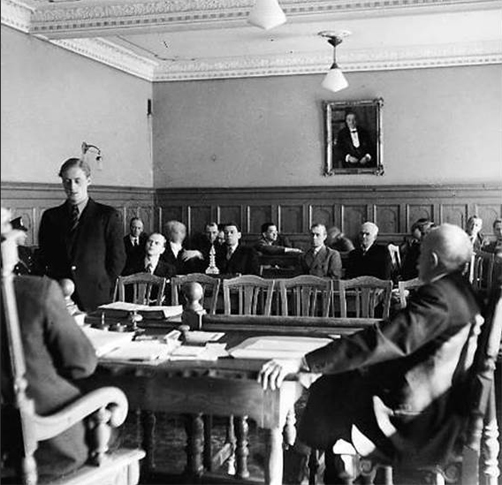
Borgström (standing) at trial, 1940.
On September the 20th, 1940, the verdicts of
Hedenström and Svanbom were presented:
Svanbom, 2 years' hard labour. He was declared deposed from his
position as Colonel.
Hedenström, 2 years' hard labour.
(Photo below: at trial, 1940)
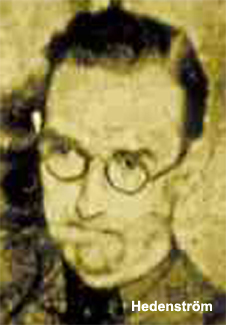
On February the 3rd, 1941, the verdict of Hallberg
was presented:
He was convicted of embezzlement and accounting fraud to 1 year and 6
months of hard labour. He was also declared deposed from his
position as Police Chief.
The Court found that Hallberg was involved in the attack at
Norrskensflamman. He was charged of complicity in damage to another's
property. No penalties could be imposed because he was declared insane
for the years 1939-1940.
Additional two people had been indicted:
Gösta Magnus Lundqvist, employed at the National Information
Board.
He had worked together with Hedenström at the Voluntary Agency. The
prosecutor considered that there was evidence that Lundquist knew about
the attack plans. Failure to inform the police about the plans was a
crime.
He was acquitted by the
Court.
Vilhelm Lindgren, editor of Norrbottens-Kuriren, member of the
Six-men Committee.
Also Lindgren was accused of having failed to inform the police about
the attack plans.
He was acquitted by the Court.
Norrrskensflamman raged over the mild verdicts. It appealed to Svea
Hovrätt in Umeå.
Negotiations in Svea Hovrätt was chaired by President Elliot. He
announced that he had found a section of the law that allowed for
significantly higher penalties for damage to another's property, compared
to that applied in the District Court.
As in the District Court the theory of a parallel attack was discussed.
Norrskensflamman's representatives also this time dismissed the theory
as unrealistic. Nothing new of significant value was added during the
negotiations. The perpetrators had been condemned by a unanimous
Swedish press corps after the verdicts in the District Court. The Communist
newspapers believed that the mild verdicts were nothing else but a
legal scandal. The perpetrators had gotten impunity for murder! The
damages awarded to Norrskensflamman was only symbolic, about SEK 17 000.
Some liberal newspapers were critical of the mild verdicts, including
Göteborgs Handels- och Sjöfarts-tidning. The newspaper was headed by the
chief editor and professor, Torgny Segerstedt.
Pressure from public opinion on the Court was hard before the verdicts.
All who somehow thought that they could affect the outcome of the case
let their voices be heard. Elliot had already at the beginning of the
trial indicated that there would be a harder sentence - and indeed it was.
Svea Hovrätt's judgement the 17th of May , 1941:
Hedenström, 7 years' hard labour.
Svanbom, 7 years' hard labour, deposed from his position as
Colonel.
Borgström, 6 years' hard labour, deposed from his position as Second
Lieutenant.
Norström, 6 years' hard labour, deposed from his position as Second
Lieutenant.
Krendel, 6 years' hard labour, deposed from his position as Second
Lieutenant.
Palmqvist, 2 years' hard labour.
Hallberg had died on March the 6th, 1941. Because
of claims for damages his estate was guarded at the trial.
Norrskensflamman appealed to the Supreme Court. On the 24th of October,
1941, the Court upheld Svea Hovrätt's judgement. The court case was
complete.
The convicted applied for pardon in 1943. The then deposed Colonel,
Svanbom, wrote in his application:
"All were burning with excitement at all costs to meet our
prospective, historical enemy, even when he sought within the country's
borders to undermine national defence through illegal propaganda."
The convicted were pardoned in instalments. The last one was pardoned
after the war ended in 1945.
My
Comments
To The Above:
Oldberg's book comprises 280 pages. It's
probably unknown to most people living in Sweden today. Sixten has
surely read the book when it was published in 1972. Personally, I have
been totally unaware of the crime's dark secrets - until now (2014).
Sixten has mentioned the attack on a few occasions. It hasn't than been
the issue of any teaching from his side. He described briefly the facts
which were known to most politically initiated at Arjeplog. That he was
forced to live with the truth about the crime for most of his life was
nothing noticeable outwards. I realize now that no one who has taken part
of the truth about the crime could fail to be influenced. Just like many
other
Communists in Norrbotten it strengthened him in his opposition
regarding Fascism and Nazism. The attack had the opposite effect than
the conspirators at the highest level had anticipated. Many people at
Arjeplog made over the years persistent attempts to get Sixten to break
with the Communism. Persuasion, enticements, threats and harassments.
Nothing helped. My opinion is that he remained as a
Communist throughout
his life. The main reason was of
course the blow up of Norrskensflamman.
Sixten always took a stand against the political violence - regardless
of the "ism's" that were affected. The Stalin Terror became
infamous within the leading communists in Sweden during the 60's. Sixten
was then one of the first in Norrbotten to distance himself from the
Moscow-loyal. These were led by the MP and the former editor in chief of
Norrskensflamman, Hilding Hagberg. Sixten found the situation untenable
and therefore terminated his subscription of Norrskensflamman.
Sixten was a Communist. This is not disputed. But he was
at
first and
foremost a human being. Unfortunately, I can't say the same about the
people behind the attack on Norrskensflamman.
When I read the book I found details showing that the Nazis who
now have persecuted me for more than 60 years,
had the intention to show that they had full control of me. As an
example I can mention my military service at I 19, Boden, 1966-1967. I
was placed at an engineering unit. There I learned a lot about blasting
technique. I have benefited greatly from this knowledge when I studied
through Oldberg's book. Thanks!
In his youth Sixten could occasionally write small posts that were
published in Norrskensflamman. He then wrote under a pseudonym. The
inserts were fierce and directed its sting against Nazism and Fascism.
He knew Filip Forsberg who also had served as
the
chairman of the
Swedish Communist Youth League. In spring 1949, Sixten
sought entry into an association at Arjeplog. Its purpose was military
training (officer training) of people who were interested in voluntary
defence of the country. He was denied entry because of
his membership of the Communist Party. Sixten contacted Norrskensflamman
who wrote a story of the matter. It was published
on the 29th of March 1949. Sixten featured at the front page.
On the following link you can download the article
(all in Swedish):
sixten_befal.pdf
I have researched further about the perpetrators' fate after their
release. All of them came to be employed by the Swedish Defence
Headquarters, Stockholm. Borgström worked in its premises at Östermalm.
He lived in an apartment not far away from the premises. He had an
interest in horse back riding and used to practice at the Defence's
stables not far away from his apartment. When I checked in the official
Swedish Death Registry, I found that Borgström had died on 29th
of March 1949. He had practised horse back riding that day. He happened then
to
fall down from the horseback. He suffered extensive head injuries. These
injuries caused his death. Nothing has been published about this event
in the Swedish newspapers.
I have been subjected to numerous attempted murders over the years. The
attempts have been designed in a way that my eventual death would look
like an accident. On two occasions, the attempts have been made in
connection with horse back riding. The first one occurred on
Christmas Day in 1971. I managed to survive these attacks
thanks to my good balance.
Forsberg had worked as a journalist for Norrskensflamman already during
the 20's. In the 30's he got involved in the fight against the Spanish
Fascism. He became a well known agitator and writer. In 1932 he was
sentenced to two and a half years imprison for incitement. Of course, he
was a thorn in the side of the Swedish Fascists already then. He moved to
Norrskensflamman only a few weeks before the attack. This raises the
suspicion that "someone" wanted him to be at Kungsgatan 27, Luleå, on
the 3rd of March 1940.
The Six-men Committee who worked to stop the
publishing of Norrskensflamman was nothing else but the conspirators'
extended arm. The criminal investigation shows that these are to be
found within the decorated societies obscure meeting rooms. Their
premises will tend toward a putrid whiff of Fascism. This is where it's
decided who should live and who should die. They hadn't been able to
stop the publishing of Norrskensflamman. The Winter War had been lost.
Now they demanded revenge as to the simple principles of the
Vendetta. The blow up of Norrskensflammans rotary press was only
fictitious (cf. False Flag, tab New World Order). When
Borgström was shepherded at the crime scene he was shown the sooty
rotary press. He was asked to point to the places where the
trinitrotoluene rods had been attached . He failed in this task. There
were simply no places to point to because the rotary press had never
been charged. The time inside Norrskensflamman's premises was spent for
completely other things. At least four fire bombs were charged at
the ground floor. These had been stolen from a military storage. Seven
trinitrotoluene rods had been deployed. Then they finished the job by
soaking the ground floor's floor in gasoline. At least 15 litres is
estimated to have been used. Heavy fire at the ground floor would
definitely block the exits to the residents in the floors above. Since
the objective of the attack was the residents at the two top floors
there was no reason to charge anything in the basement. When the fire
department arrived they could see that there was no fire in the
basement. With these measures withtaken the Second Lieutenants had
ensured the powerful explosive impact. The building would flare up
momentarily. Those who were in the building would be matchless and
killed in the fire. The main target among the ten was Filip Forsberg.
The assertion that Police Chief Hallberg would have come across a key to
the basement (where the rotary press was) has no credibility. The key
that was needed was the one that took to the ground floor's entrance and
thus access to the office and editorial premises. The statement that
Hedenström was the one who had local knowledge lacks confidence. My
hypothesis is that Valdemar Granberg was the key person in the drama. He
was detained at Storsien and therefore he was an easy prey to the
conspirators. Granberg was said to have suffered from depression and
alcoholism the time after the attack. Finally, he committed suicide in
1960.
The management of Norrskensflamman was of course aware of the existing
risks. Numerous threats had been forwarded. It had witnessed the
German Nazi rampage. In 1933 they had put fire to the Reichstag
building in Berlin. The first step in the German democratic dismantling
had been taken. It's likely that the management believed that the
residents of the property would be a safeguard against a possible
attack, but in their imagination wasn't the insanity that the
perpetrators had demonstrated. The conspirators knew that the blow up of
the rotary press only would be a meaningless prank. Norrskensflamman
could be printed in other places in Sweden. The newspaper Ny Dag in
Stockholm was such a place. The purpose of the attack was to kill the
newspaper's staff. Machines can always be substituted but it is much
more difficult to acquire new staff. The political motive is obvious.
That there were four children in the building was insignificant to the
conspirators. As to the Fascist's twisted views the Communist offspring
are allowed targets just as all other Communists. The age of the
offspring is irrelevant in this context because even the smallest child
represents a future potential threat. The presumption is that
the Communist's children automatically would become communists.
Was Maj Hellberg, 8 years old, a
Communist? Under a
Fascism approach the answer is unconditionally
'yes'.
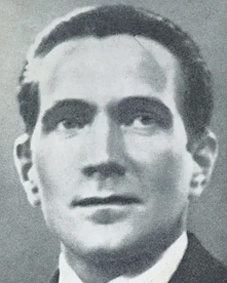

Arthur Hellberg
Joseph Stalin
(1903 - 1940)
(1879 - 1953)
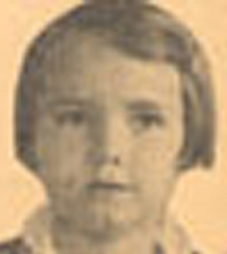

Maj Hellberg
Artur Hellberg
(1932 - 1940)
(1903 - 1940)
The bucking of the rotary press, the "General-rehearsal" at
Norrbottens-Kuriren etc. was only smoke screens to facilitate the mild
judgements. These constructions were created by the conspirators in full
agreement with the prosecutor and judges who would figure in the legal aftermath.
The trials were political fake trials. Overall, we are talking about one
of the biggest legal scandals in the history of
Sweden.
The deed was a Fascist demonstration of power. An
important feature of the Fascist's exercise of power is to scare their
opponents into submission. The blow up of Norrskensflamman was thus a
warning to other Communist newspapers in Sweden. The followers of
Fascism are trying even up to this day to cover up
the truth in this legal case. It's almost a generation ago the attack
occurred, but it still remains as an open wound in the
Swedish society. When
the criminals were revealed, it was a huge loss of prestige to the
Swedish police and military. Many people who had nothing to do with
the crime got their lives ruined. As me concern I've had reason to
occasionally think about the ideologies that have the violence as
its
fundamental idea. What kind of people are attracted to these ideologies?
What are the motives? If we look back historically at the ideologies
that have caused mankind's biggest-ever
humanitarian disasters, Nazism and Fascism, it should deter even the
most violent individuals.
The people who end up in the grasp of Nazism or Fascism could be
brainwashed (mind controlled) to be vassals without willpower of their
own. They can then be commanded to the most heinous acts. I don't
suggest that the three Second Lieutenants were brainwashed, mentally
retarded, etc. They were not even the subject of forensic investigation,
but they had passed all the mental barriers that usually prevent a man
from committing a crime containing violence. It
was war. As a military one must obey orders. The Second Lieutenants were
under command of Colonel Svanbom.
Whatever they thought of the moral, etc. in the deed it was of
secondary importance. In such a situation you put the responsibility for
your action on the one who's superior. Then it
immediately becomes easier to do what you are commanded to do. Anyone
realize that the "operation" wasn't a figment by Colonel Svanbom. In
the strict military hierarchy he was only an officer, although a
Colonel, a cog on a low level. In Oldberg's book General Archibald
Douglas is exposed as the first "word" mentioned in the book. It
usually means that the person is important to the book's context.
Douglas was forced to submit to regular police interrogation but nothing
could be proved. It's also unrealistic to think that a
General would be
prosecuted in the military-strategic situation prevailing in April 1940.
In compliance to the authoritarianism and the
strict hierarchy that applies within the Nazism and Fascism it was only
Colonel Svanbom and the Second Lieutenants who could be considered to
take a sentence for the military part of the "operation".
The imagination of the Communists as naive helpless
idiots is a myth. They knew that the fight against Fascism and Nazism
was a fight to the death. Like their opponents, they were organized in
secret networks. As an example I can mention how they managed to
infiltrate the Police in Luleå. The following is stated on page 14 in
Forsberg's tiny writing Fem döda –
Luleådådet i processprotokollens belysning
(more about this at the end of this chapter):
About the role Lindgren had at Hedenström's side speaks Constable
Erik Petter Westerlund's testimony. The witness told among others:
Already in the autumn of 1939 Westerlund noticed that the journalist
Hedenström and editor Lindgren often visited Hallberg at his office. The
visits used to last about one hour. The door between the Police
Chief''s
room and the room where W. was had always been closed and the people in
the Police Chief's room had spoken in a low voice. After the beginning
of 1940 ........ Hedenström had also quite often come in the company of
the editor Lindgren. W. had never seen Hedenström visit Hallberg with
anyone else than Lindgren. It may be allowed to concluded from this
testimony, who in fact was the man behind the Police Chief's Six-men
Committee.
Hitler and Mussolini were on march in Europe. Denmark and Norway were
occupied in April 1940. The conspirators calculated a Nazi takeover in
Sweden in the near future. It would basically be safe to
both the
conspirators and the assassins to carry out the attack. As the world
evolved, it became politically impossible to sentence the three Second
Lieutenants to the punishment they deserved i.e. imprison for life time
. Also leading Social Democrats had reasons to be careful in this legal
case. If they had contributed to life time sentences the consequences
could become severe when the supposed new rulers had taken over.



Ebbe Hallberg
Louis Grand Duke of Hesse
Ebbe Hallberg
(At trial 1940)
(1845 - 1894)
(1882 - 1941)
The tragic figure Ebbe Hallberg is worth to be
mentioned in particular. Like many other police chiefs in Sweden at that
time he was part of a Nazi network. He was a member of the Masonic Lodge
in Luleå. His lawyer during the trials was a openly active Nazi. Once he
had been prosecuted, he was no longer useful to the conspirators. He was
rather a burden and at the same time a very dangerous one. He was a
severe alcoholic and unstable. That he had been revealed as a criminal
was a terrible affront to the Nazis in Luleå. To protect the
conspirators he was instructed to deny everything during the trials. The
forensic psychiatric investigation was a way to defuse this wandering
bomb. As expected, the doctor found that Hallberg was mentally ill
during the years 1939-40. Therefore, he could not be sentenced to prison
for his involvement in the attack. The information that he also suffered
from cancer was announced (cf. Jack Ruby, the assassination of JFK). On
March the 6th,1941, Hallberg died at Långholmen's infirmary. The Police
Chief was no longer a problem.
I want to give the publishing house Bonnier's a praise.
They have had the courage to publish the book. It reveals in a stark way
the Nazi and Fascist forces behind the brutal murders. When I make the
comparison to the Palme murder there
emerges a pattern that's essentially
identical to the attack on Norrskensflamman. It's the same corrupt
police and military that features - but then 46 years later. Corrupt
judges and prosecutors give their contributions in the trials. Attempts
to cover up the enormity of the case occurs. Oldberg's book is today as
relevant as when it was published in 1972. It's a
document that is too important to be buried in silence.
The book can be borrowed within the Labour Movement Archives:
www.arbark.se


Filip Forsberg
Joseph Stalin
(1905 - 1944)
(1879 - 1953)


Filip
Forsberg
Joseph Stalin
(1905
- 1944)
(1879 - 1953)
An important complement to Oldberg's book is Filip
Forsberg's tiny (A5) writing " Fem döda – Luleådådet i
processprotokollens belysning ". Also this
document can be borrowed within the Labour Movement Archives.
Shortly after the perpetrators had been revealed he wrote about his
perceptions regarding the attack. Forsberg had realized that he was the
perpetrator's main target
- even if he doesn't express it in his writing. Since he had become a
dangerous witness, it was likely that the conspirators would try to eliminate him
again. The
publication became a way to in any case publish the truth about the
attack. Forsberg doesn't mince his words. It was arson. Nothing else.
The document is harrowing reading because it reveals the brutal and the
insanity in the attack. Here is also the truth and the key to the murder
riddle. I want to thank Forsberg posthumously. His contribution has been
of great importance in the fight against the Fascism.
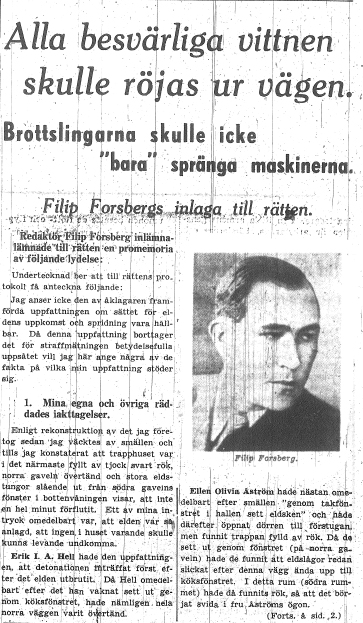
The Death Of
Filip Forsberg.
The 28th of October,1944,
Norrskensflamman writes:
"Forsberg became ill three weeks ago and was admitted to hospital.
Shortly thereafter he had a surgery because of gallstones. Everything went
well and the time of his departure was already established when the
fever suddenly rose slightly. He felt healthy, and as late as noon
yesterday his wife was with him and he was then in his best vigour and
expected to return soon at home. At four o'clock that afternoon he died
of a blood clot. He became 39 years old. "